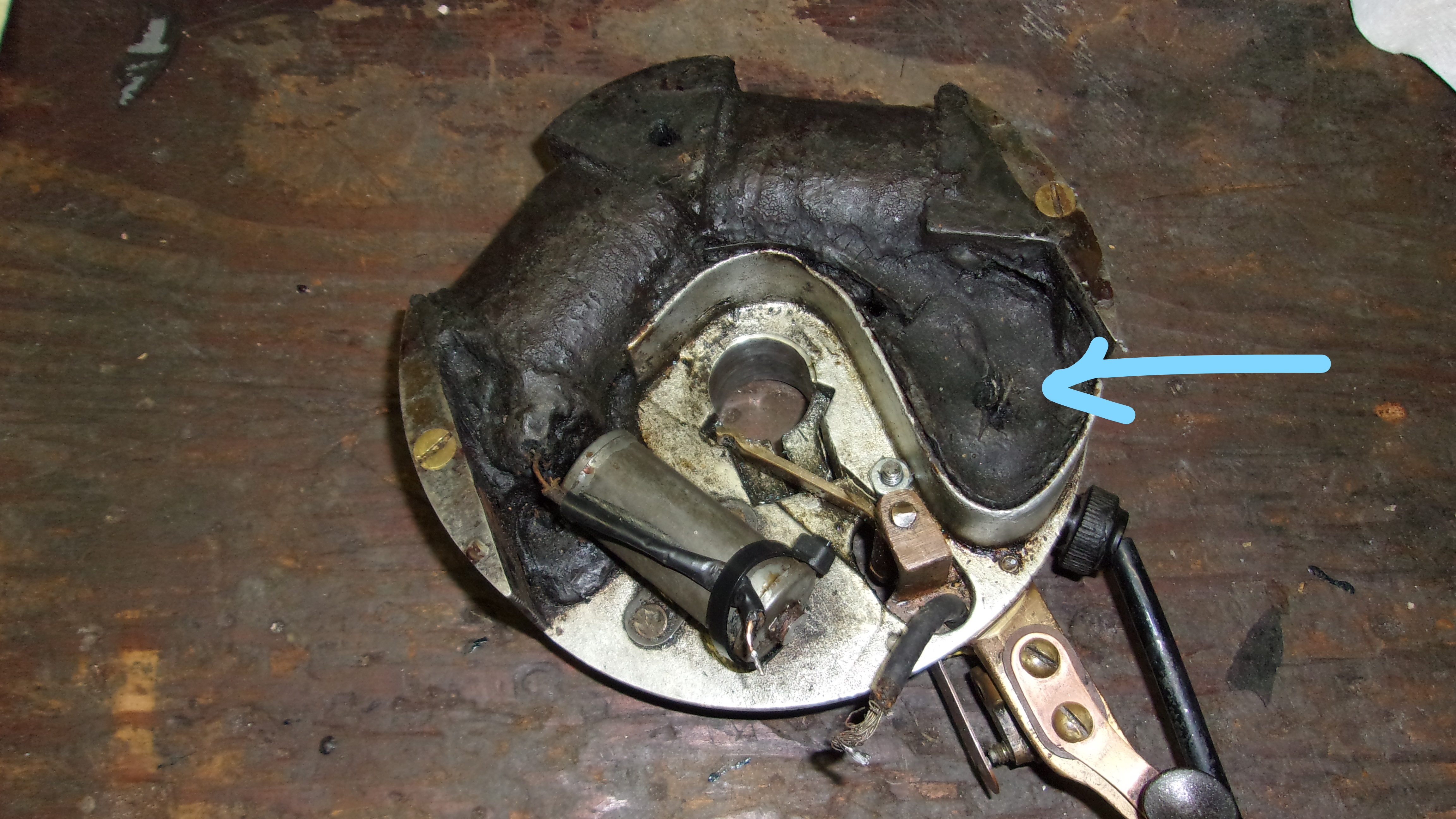Home › Forum › Ask A Member › ’22 Evinrude RBM
- This topic has 35 replies, 7 voices, and was last updated 6 years, 5 months ago by
slim60.
-
AuthorPosts
-
October 27, 2017 at 12:02 pm #66671
It looks good! I’d be proud to run that one. Nice work!
-BenOldJohnnyRude on YouTube
October 27, 2017 at 2:32 pm #66674Agreed. That is a beautiful motor. You should be proud.
Wayne
Upper Canada Chapteruccaomci.com
October 27, 2017 at 2:57 pm #66677Looks pretty good to me.
I’m a member of that "help me pick it up" club.
Haven’t been as fortunate as Brook or T-2 in
finding one of the very early ones that are
much more civilized when it comes to their
weight. Mine will be pretty much a decorator
item while have it. I do enjoy undoing some
of the abuse they have experienced. If a
future owner chooses to run it some one day,
its ready.October 28, 2017 at 2:09 am #66711Tubs, you mentioned a manual. Where could I find one?
October 28, 2017 at 10:30 pm #66748The manual I have is a 1927 reproduction
I got on eBay quite some time ago.
Printed by the Tranier Paper Co.
I did a search but nothing for them comes up.
I haven’t seen anything offered lately.October 30, 2017 at 2:31 am #66789Thanks for the compliments, it means alot. Unfortunately I have lost spark. I reinsulated the conderser wire and crimped a connector on it. Checked continuity and all checks out good. How can I tell if the condenser is any good on this one? I don’t get it. The motor WAS running.
October 30, 2017 at 4:28 pm #66804October 30, 2017 at 6:42 pm #66808There SHOULD be infinite resistance between the wire and the can. The can goes to ground, the wire goes to the points. Zero resistance would be like the points never open. A capacitor blocks direct current, but passes alternating current. In other words, when the switch is closed putting voltage on the capacitor. current will flow until the the voltage in the capacitor equals the applied voltage. An alternating voltage will see the voltage in the capacitor rock back and forth – positive to negative to positive to negative, etc. The spark you see is a very high frequency alternating current.
A good capacitor (not leaking) will hold a charge. Back in the day when capacitors were called "condensers" and all we had were analog meters, we tested them on the resistance scale. Touching the probes to the capacitor resulted in the needle jumping and then returning to infinity. This indicates the capacitor has changed to the voltage in the meters battery (usually nine volts) and is not leaking. Leakage would show up as some resistance less than infinity. Changing to the low voltage scale the needle should jump again showing the capacitor had retained some voltage until discharging through the meter. . . 😉

 October 30, 2017 at 7:41 pm #66810
October 30, 2017 at 7:41 pm #66810The can is soldered to the mag plate. I did get it to charge and watched it discharge through the DC meter. There is nothing between the coil wires or to ground. There is a bare wire on the top right of the coil I used to check the plug wire. The black wire left of the condenser would be the primary right? Thanks for the schooling Gary. I got a better idea how a condenser works.
November 1, 2017 at 12:02 am #66862This really stinks! This post should be finished, but nooooo. It ran last year then quit. I found chips in the cylinder. I tore it down, replaced cotter pins on the con rod caps. Painted. Resoldered wires in the mag. Everything was looking good. Started powerhead on the bench. Reassembled lower and ran it again. Two days later… no spark. I’m beginning to think the coil was bad all along. How can I test this coil?
Pic shows bare wire I used to check plug wire. -
AuthorPosts
- You must be logged in to reply to this topic.


